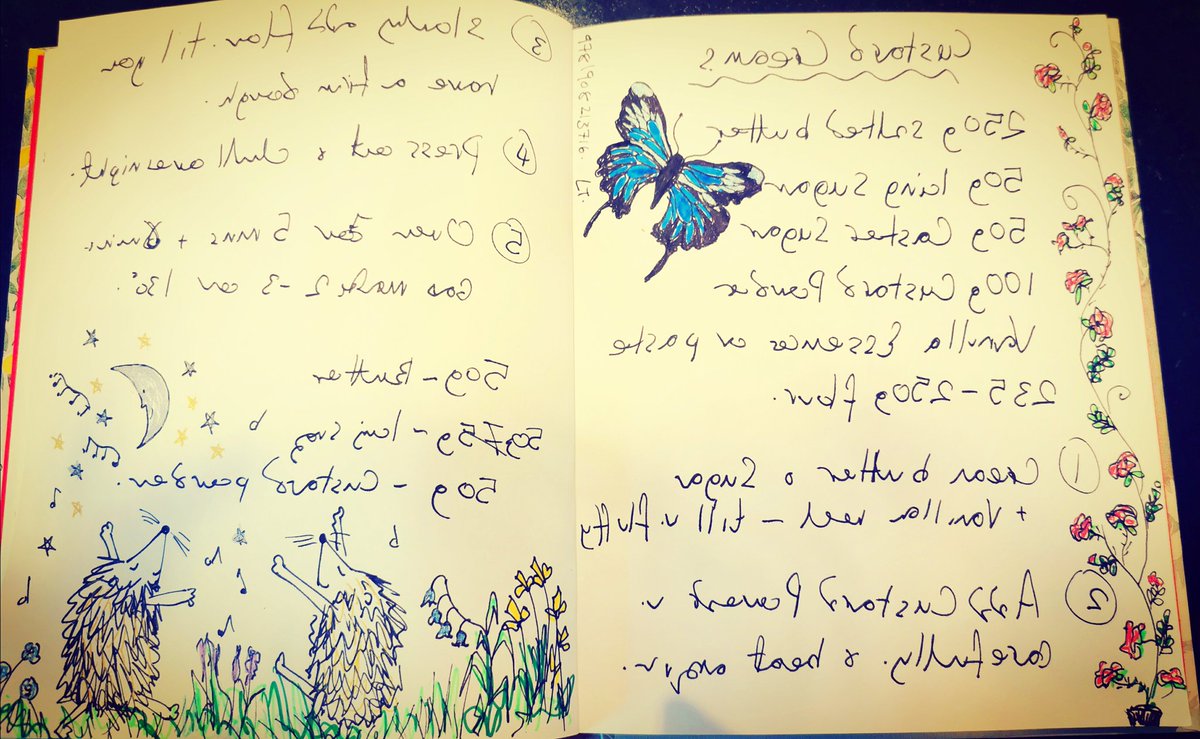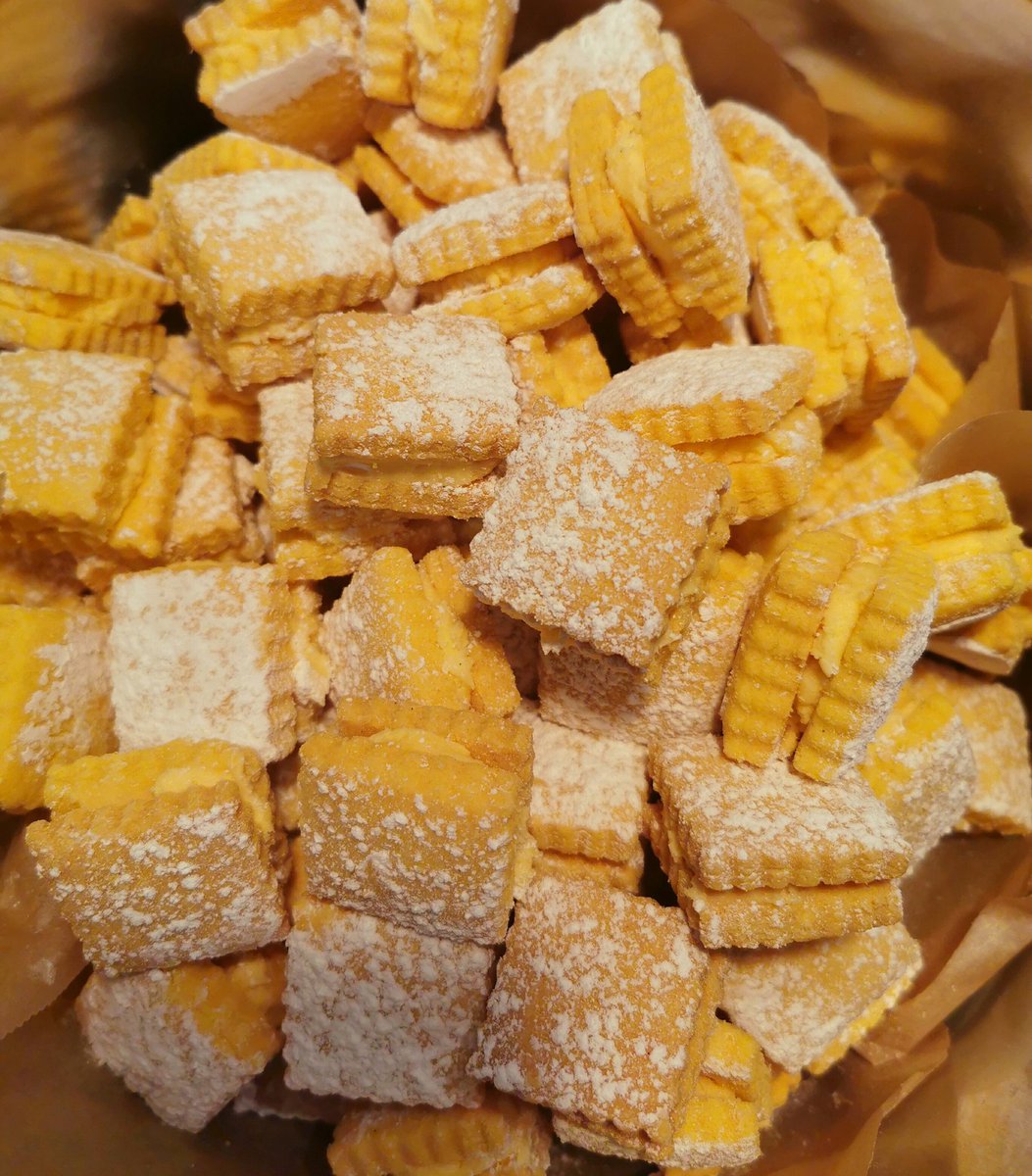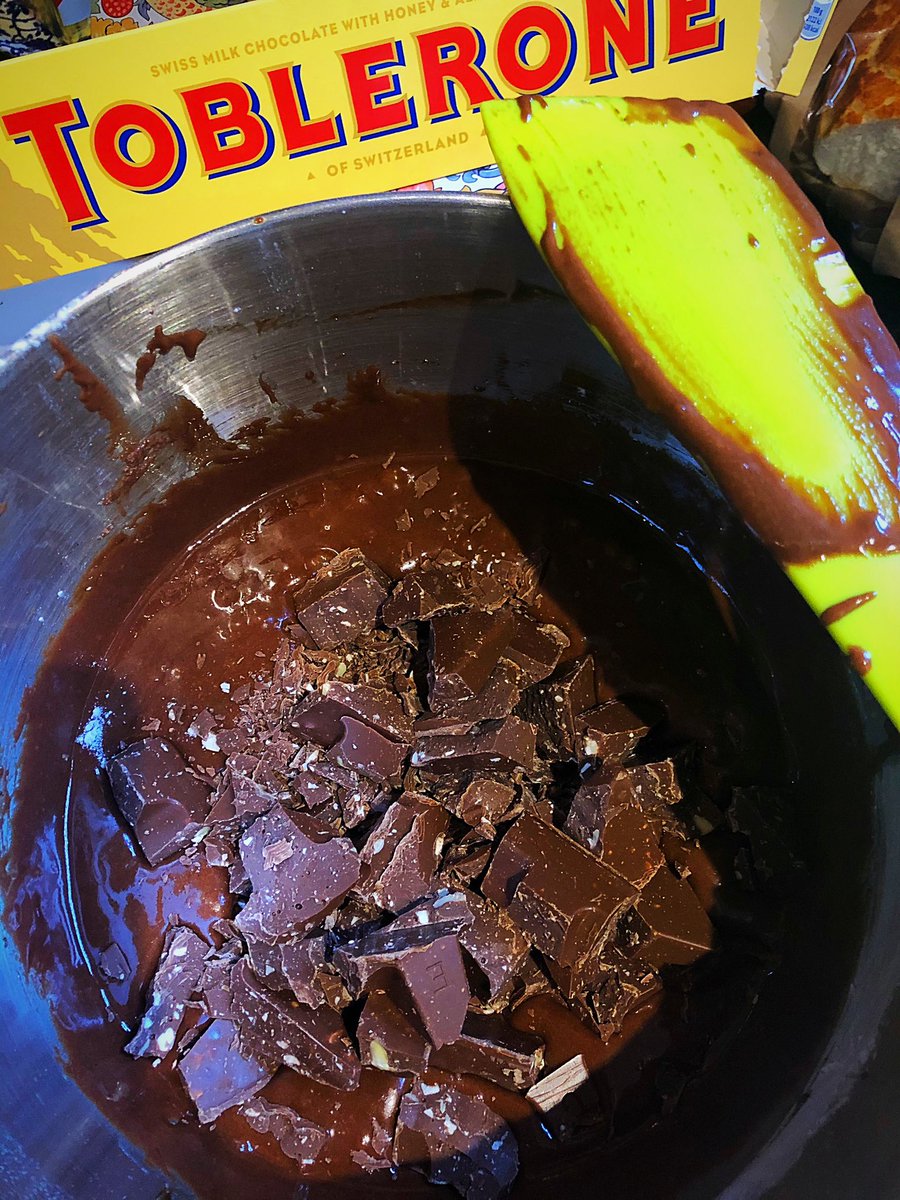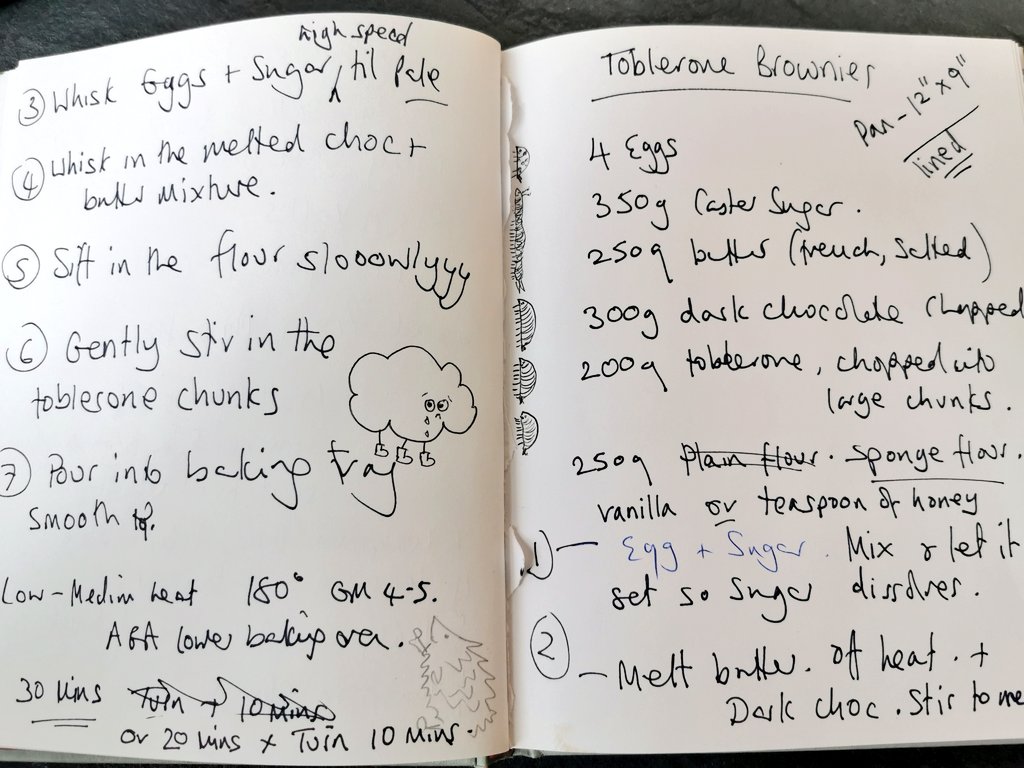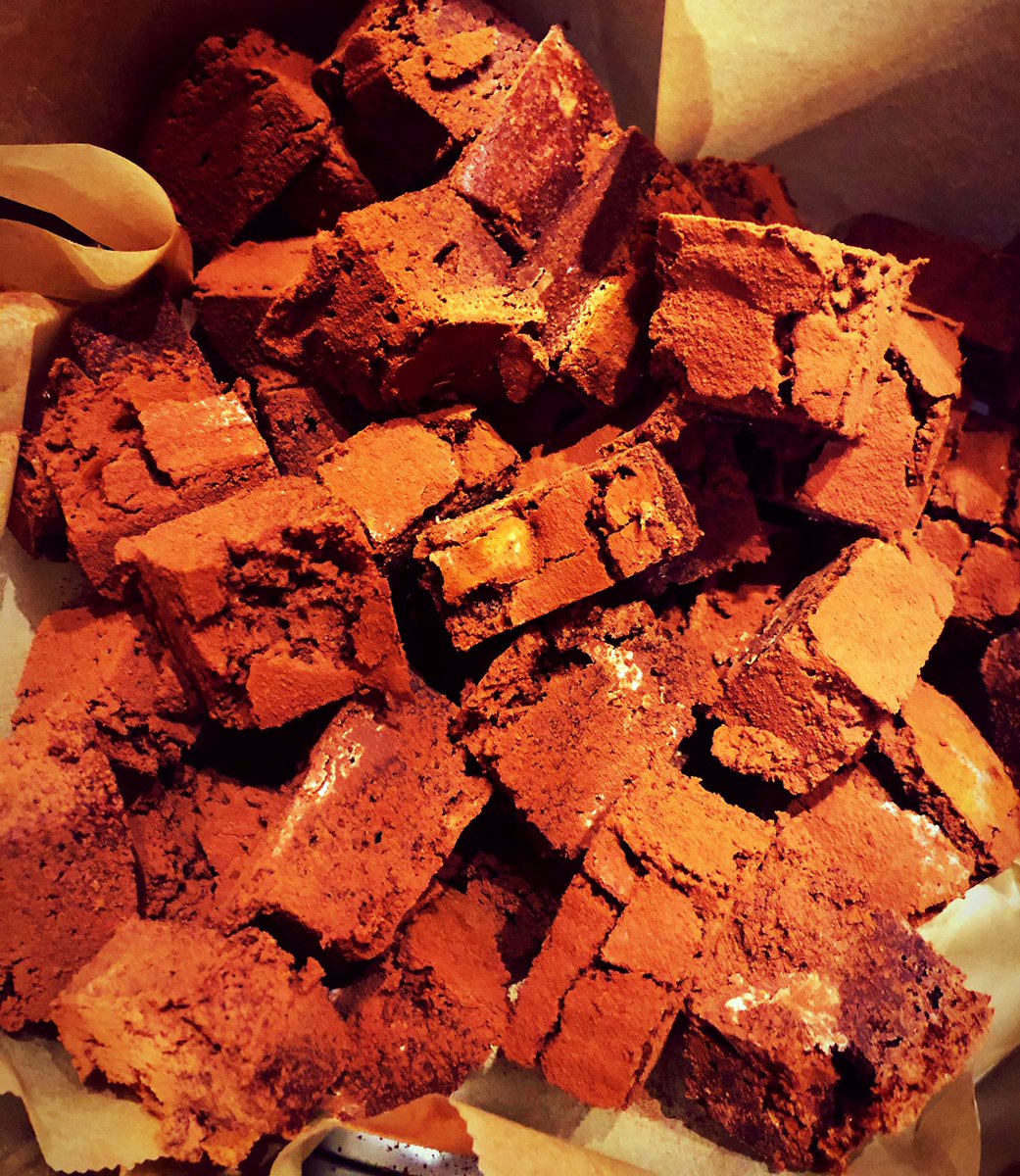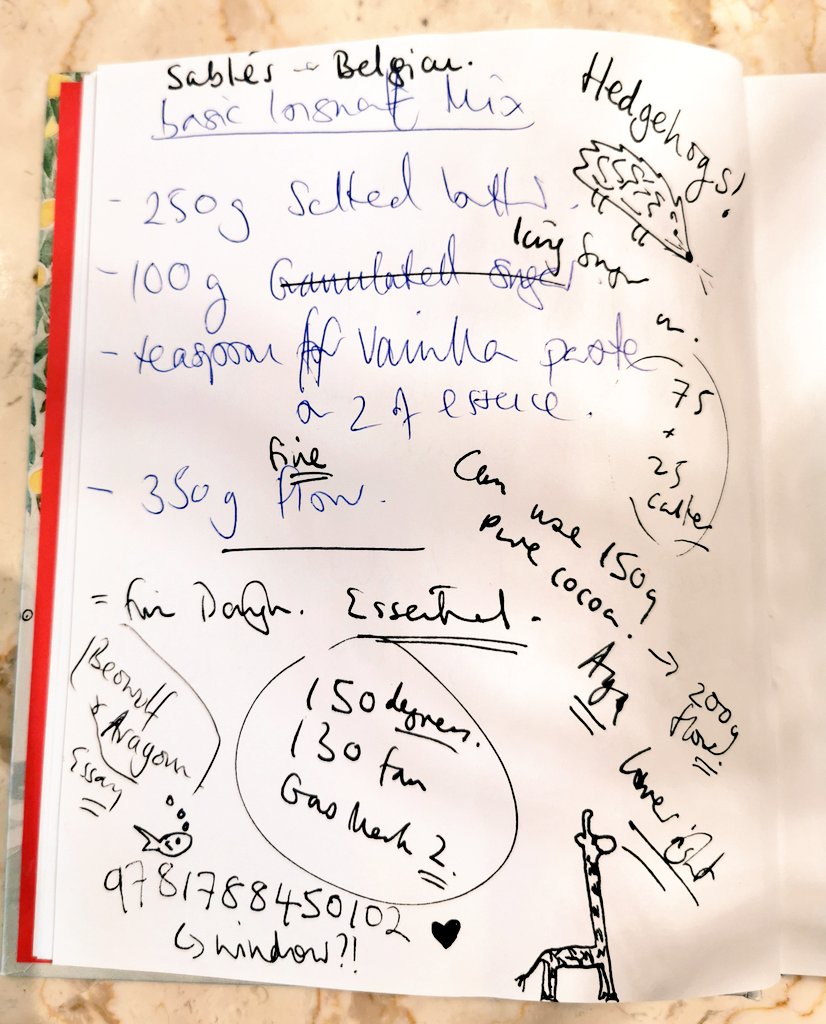
🌞COLOURED SHADOWS!🌈
We extended our #Shadowghast competition with @ThomasHTaylor 'til Friday 12th, so time for more shadow fun!
So... did you know that shadows don't have to look black? We've created a way to show you...(it involves SWEETS!🍬)
#thread #edutwitter #shadows


We extended our #Shadowghast competition with @ThomasHTaylor 'til Friday 12th, so time for more shadow fun!
So... did you know that shadows don't have to look black? We've created a way to show you...(it involves SWEETS!🍬)
#thread #edutwitter #shadows
https://twitter.com/KenilworthBook/status/1454750561941794816
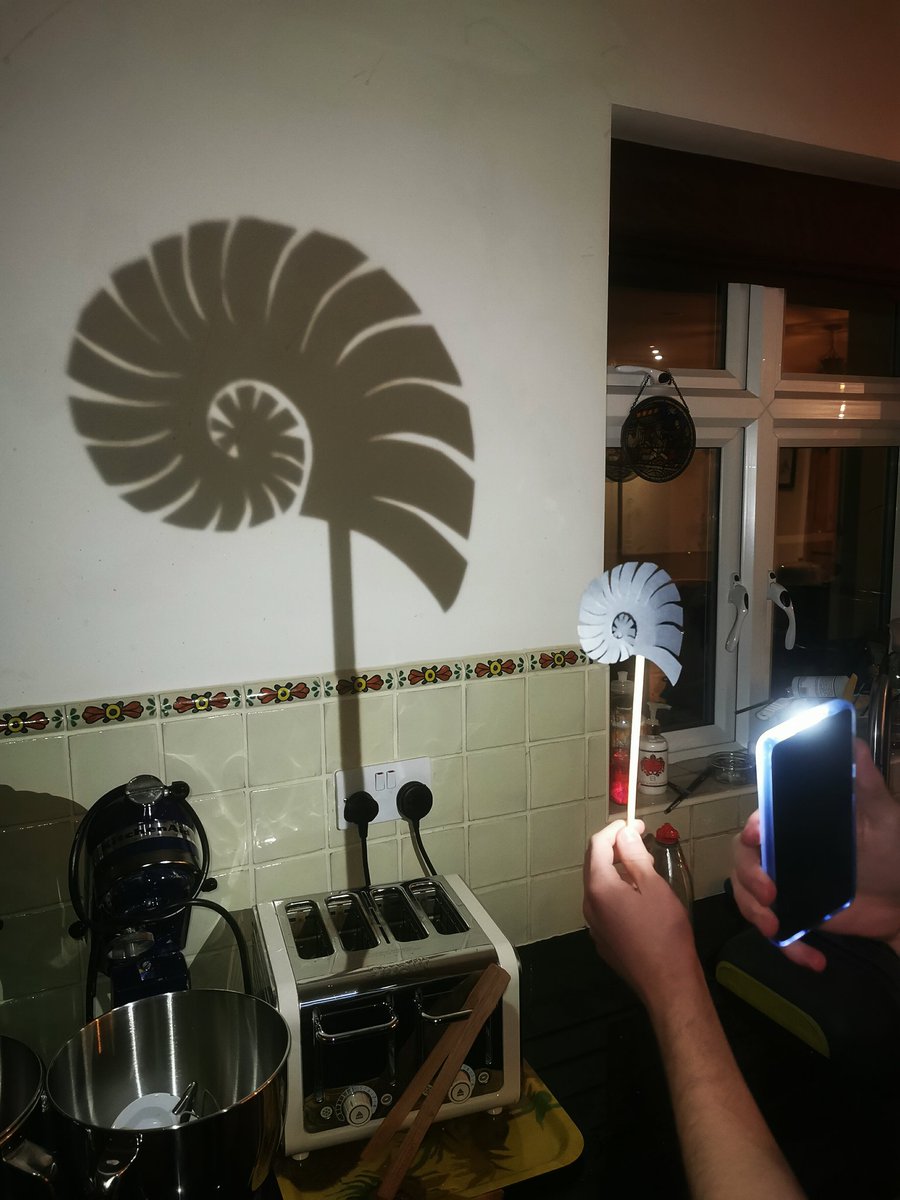
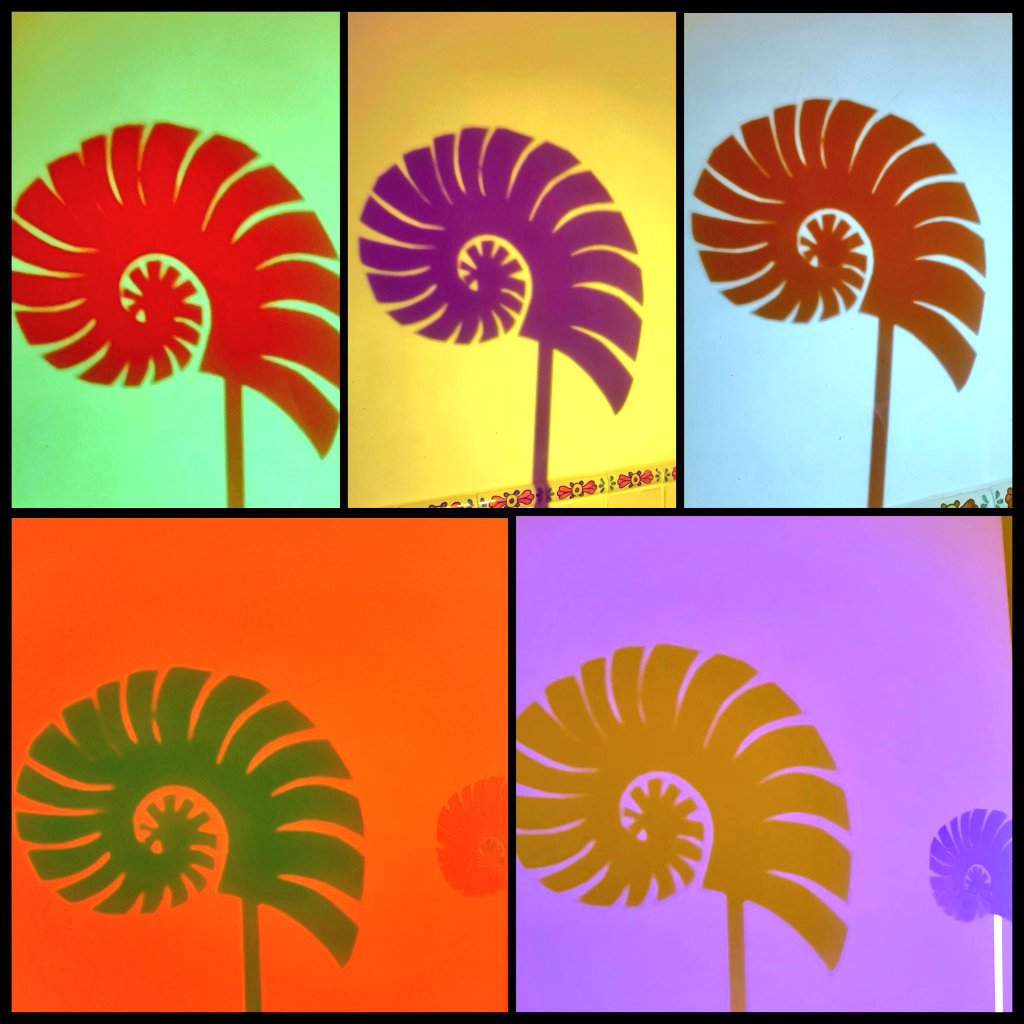

For this you will need: a cut out shadow puppet on a stick (we made a Nautilus shell this time, we'll show you how in a mo...), some different coloured bright sweet wrappers, and a strong torch or phone light (phone lights are often better as they are brighter!). 

OK, so let's start with the Nautilus Shell. In Eerie-on-Sea, Herbie Lemon is the Lost and Founder of the Grand Nautilus Hotel. It is named after this creature. Nautilidae are related to squids and octopuses, have been around for 450million years, and some have grown up to 2.5m😬! 



Their iridescent shells have long been prized as treasure from the ocean. Rich people had them made into wonderful sculptures, like this in Windsor Castle. It was made by Nikolaus Schmidt c1600. It shows Neptune being chased by sea monsters, and Jupiter throwing thunderbolts.⚡🐉 

Nautilus shells are even more wonderful if you look inside them! Inside they are a mathematically perfect spiral. Like many things in the natural world, these shells form on a mathematical sequence known as the Fibonacci Sequence, sometimes called The Golden Radio. 

This mathematical sequence is EVERYWHERE in the world, even inside our own bodies. If you like maths, magic and nature (which are very similar things, really), you can find out more about Fibonacci here: glasgowsciencecentre.org/our-fibonacci-…
But let's make our shell - it isn't difficult!..



But let's make our shell - it isn't difficult!..




If you want to do the maths, please do! But otherwise just draw a spiral on some card, and then cut it out carefully - you need to cut all the way round the spiral to the very last little snip in the centre. Snip snip snip... 

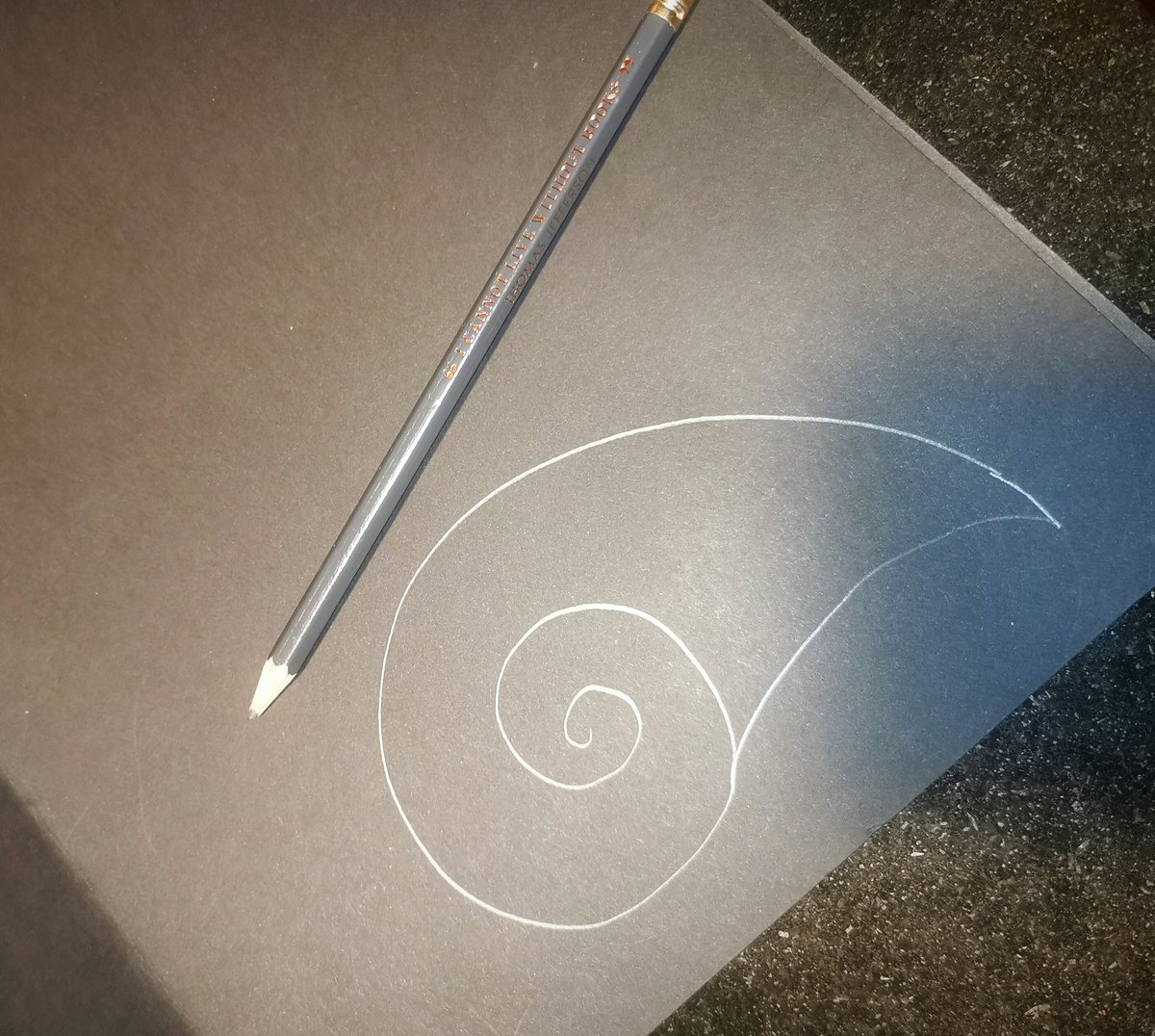

Now carefully cut little tiny slightly curved triangles out of the shell to give it its 'chambered' shape. When you're done, stick it to a lolly stick, pencil or just a twig. I just glued mine onto an old chopstick. And VOILÀ - you have a Nautilus Shadow Puppet! 



You now need to eat some sweets so that you have a few different brightly coloured bits of cellophane. You don't need lots - even just red and green is fine. First, shine your torch or phone light at your shadow puppet with its normal, white light. The shadow appears grey/black. 
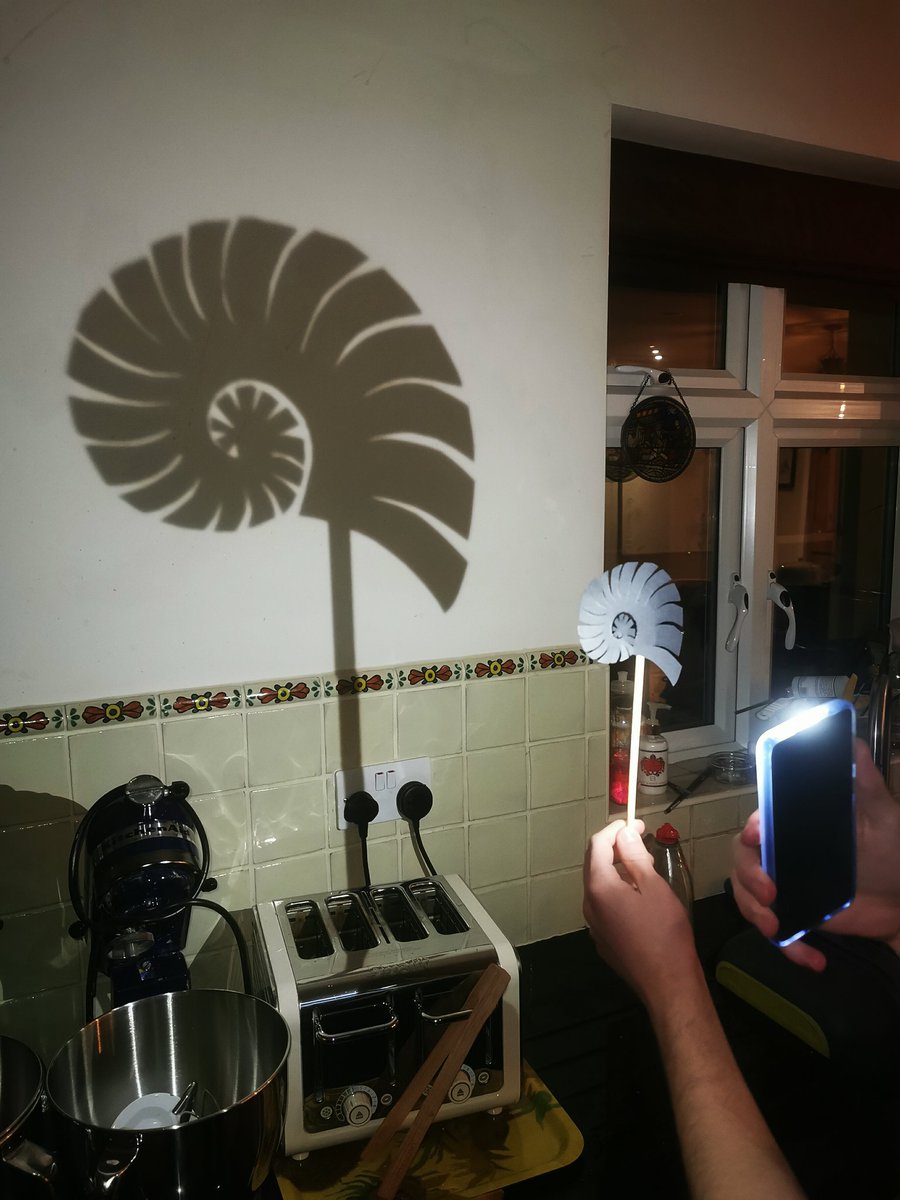
Now, make sure you're in a dark room, with a whiteish wall. Choose a bright sweet wrapper (or put two of the same colour together - YEAHY two sweets!) and cover your torch so the light changes colour. Shine it at your nautilus again and you'll see the shadow looks different! 

So what's happening here? Well normal white light as seen by humans is made up of three 'primary additives' which are red, green and blue. When they are combined, they look to us as clear, 'white' light. 

But if you filter out one of those three colours (say red), the shadow your eye will see is a combination of the other two (greeny blue). 

It is like when you study primary/secondary colour at school - but the complementary colours of light combine to make 'white' light, not black. There are similarities: the complementary colour of Violet is always Yellow (Violets and Lemons always belong together!). #shadowghast 


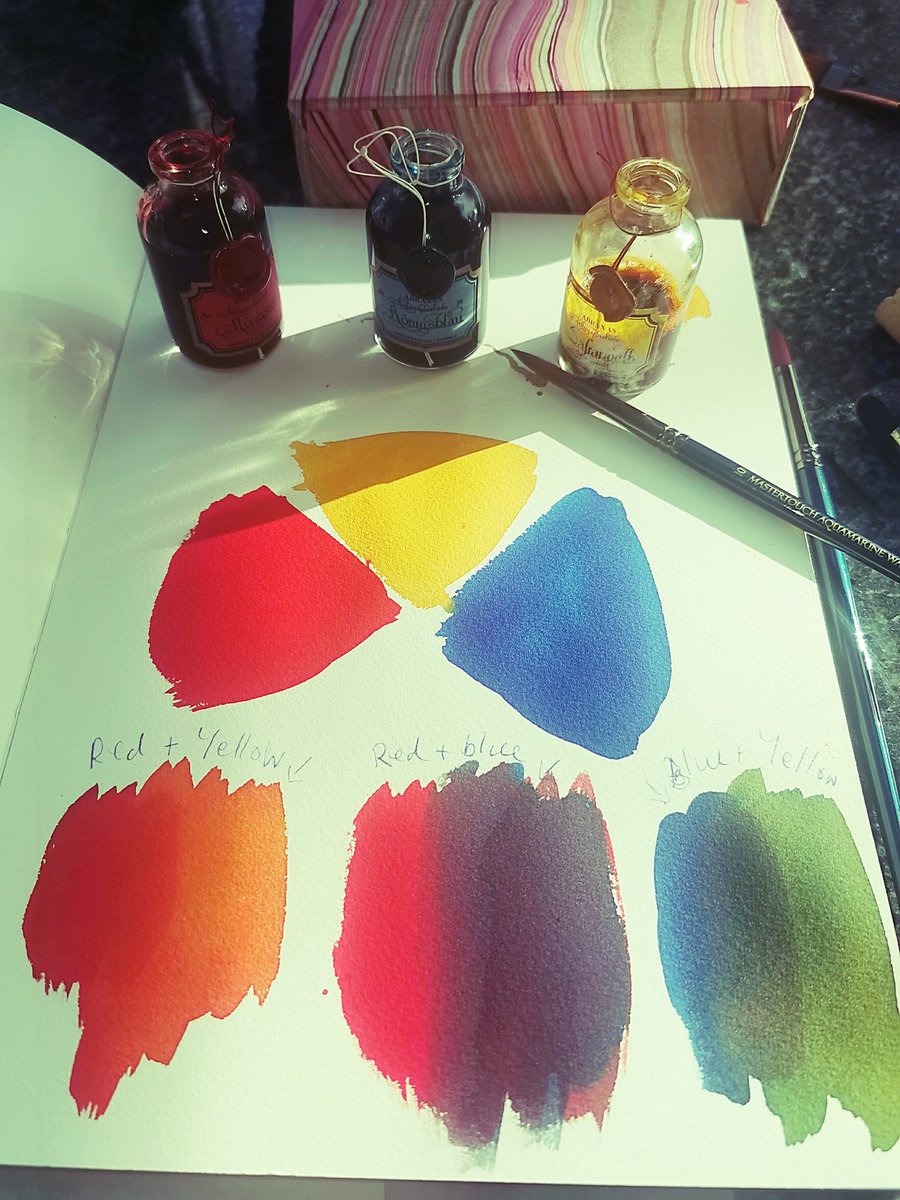
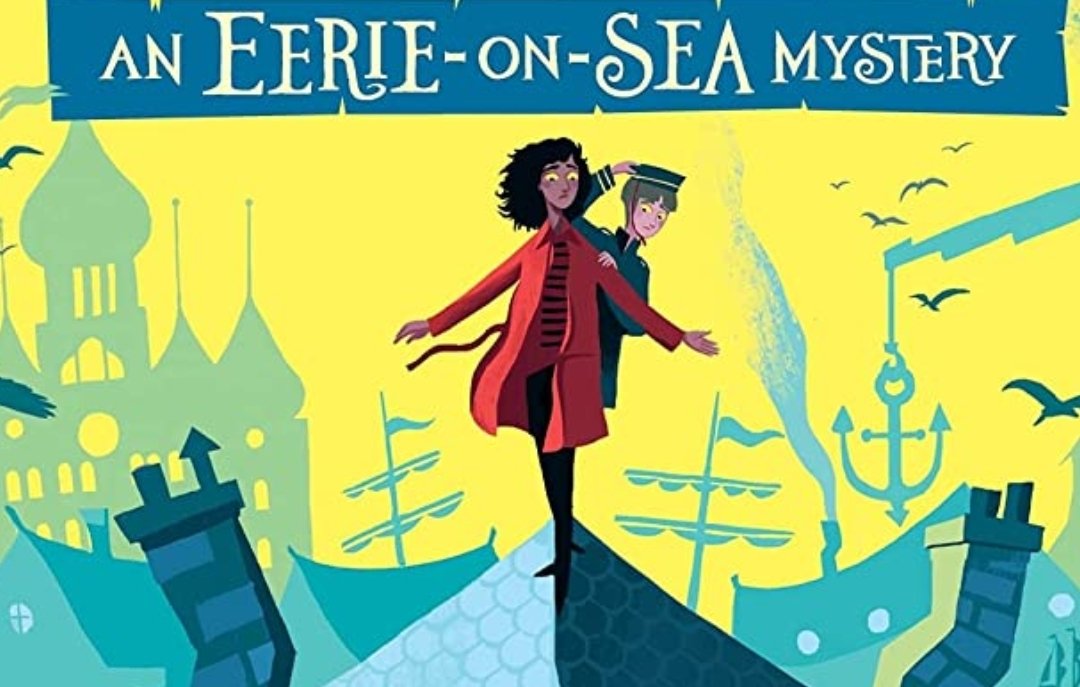

Here we've put the green sweet wrappers to filter the light. What your eye will see is then a combination of the other two colours - a sort of purpley red. BUT WHY?! (I hear you all shouting...) WHY?! WHY?!! 
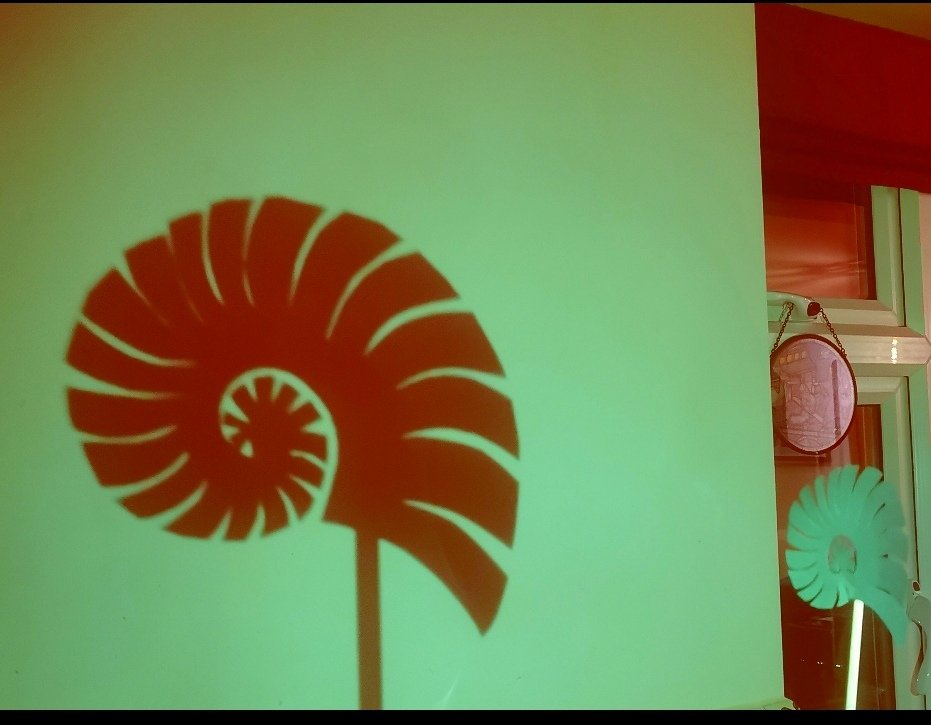
The human retina, which covers the back of the eye, contains light receptors called RODS and CONES. Rods are used for night vision and they only let you see shades of grey. You have only one type of rod but THREE types of cones. Cones let you see colour, as long as it's not dark. 

The three types of cones divide up visual colour signals into red, green, and blue. These signals are combined in the brain and enable most of us to see over a million different colours! (BIG question: so are there colours we cannot see? Can you imagine a colour you cannot see?). 

This is why it takes time for your eyes to adapt to darkness. Cones work when there is plenty of light. As you move from a brightly lit area to a dark one, your pupils dilate and your eyes change from using cones, to using the rods at the edge, so you can navigate in low light.
Now back to our lovely Nautilus. It lives in a very different environment to us, deep underwater, so its eyes are different - it has a simple eye like an old pinhole camera. So really all they can see is darkness or light There is no evidence that they can see colour 🥺🌈🐚. 
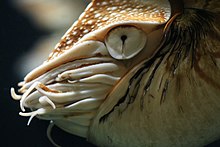
So there you have it my fine friends! The human eye is amazing. If you love the physics-y bit, you can find out more about light here with @NatGeo natgeokids.com/uk/primary-res… 

And if you like the biology bit about eyes and how they work in different creatures, check this out from @NHM_London nhm.ac.uk/discover/amazi… 

And if you'd like to find out more about that Nautilus sculpture of Jupiter (with his thunderblots⚡) , Neptune, sea monsters and double-tailed mermaids, you can find it here: rct.uk/collection/506… 
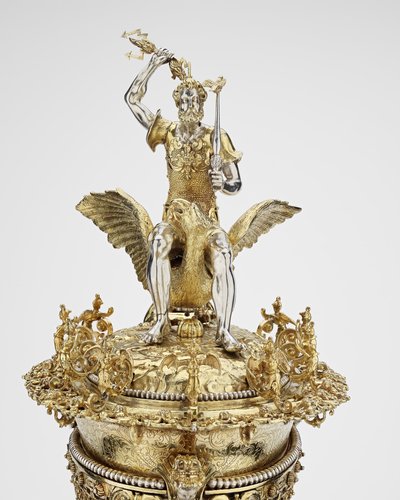
Aaaaannnd FINALLY... If you'd like to read a brilliant book about shadows and creepy goings on, get yourself a copy of Shadowghast by @ThomasHTaylor. We've got bookplate copies (apparently signed by Erwin the Cat). Or you can go to your local library and ask to borrow the book! 

Thank you for your time! If you have a go at this please do send us your photos, and don't forget to tag @ThomasHTaylor and us, and use #shadowghast
HAPPY SHADOWING!

HAPPY SHADOWING!


• • •
Missing some Tweet in this thread? You can try to
force a refresh






